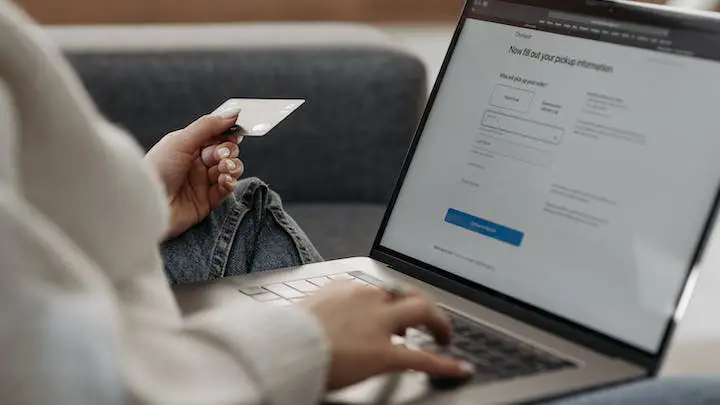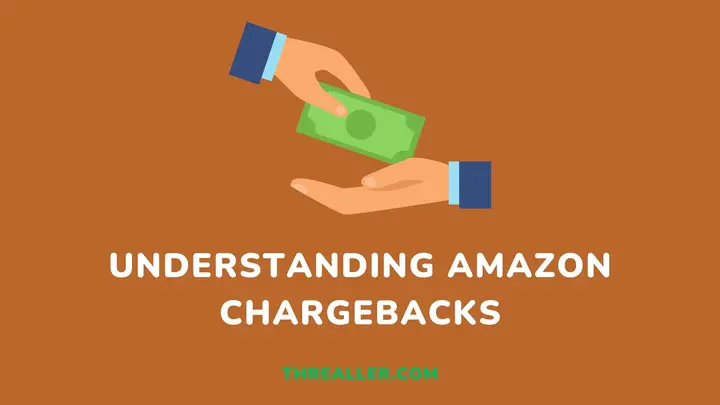Every Amazon seller expects to sell a product and be done with it. However, this may not always be the case because chargebacks and refund policies exist. To succeed as an Amazon retailer, you must understand how to address them.
Also, Amazon does not expect you to approve every reverse because not all claims are genuine. Hence, chargebacks should not scare you if you are a competent seller or retailer.
This guide covers the meaning of Amazon chargebacks, how they work, and why customers initiate the process.
Understanding Amazon Chargebacks
An Amazon chargeback or charge dispute is a financial transaction initiated by a customer in response to a purchase made on Amazon to get a refund to their bank account or credit card company.
Although this process was designed for customers to dispute fraud, billing errors, and other transactional mistakes, some online shoppers exploit it to scam retailers.
How Does It Work?
An Amazon chargeback begins with a customer disputing a purchase. The reason(s) for this dispute may vary from receiving a wrong or damaged item to not recognizing the fee on their account statement.
Such customers will contact their bank or credit card company to dispute the transaction. Some may contact Amazon directly and provide evidence, like order details and emails, to support their claim.
If you report to your financial institution, they will contact Amazon and ask them to investigate before deciding the case. This method allows Amazon Pay to handle the dispute.
On the other hand, if you initiate a dispute via Amazon Seller or as a customer under the A-Z protection guarantee policy, Amazon directly mediates the situation. This method usually ends with Amazon inquiring about your preferred method of resolution.
Most investigation involves contacting the retailer and reviewing all the documents and chats relating to the purchase. Amazon will only decide if the customer’s claim is genuine or false after investigation.
You will get a refund if your claim is genuine. Otherwise, there will be no refund, or you may have to settle for other resolution options. Customers should also note that:
- Merchants have 11 days from the chargeback date to accept or reject the dispute.
- Refusing to respond after 11 days means the chargeback holds, and the customer will get their reversal.
Why Do Customers Initiate Chargebacks?
I have hinted at some reasons customers initiate chargebacks for Amazon purchases. Here, we breakdown all the possible (genuine) reasons:
- Unauthorized or fraudulent transaction: Amazon customers can initiate a chargeback if they did not authorize any purchase. This is usually the case if a stolen credit card was used for an order or there was a genuine misunderstanding.
- Item was not as described: Customers initiate chargebacks for items that do not look like what they ordered on Amazon. In this case, the seller has to provide the exact product listed in their catalog or issue a refund.
- Item not received: You may also get a chargeback notification if your package was not delivered to the buyer. Sellers need to provide proof of delivery to dispute this chargeback or initiate a new delivery process for the customer.
- Multiple chargebacks: Customer disputes duplicate or multiple chargebacks immediately it reflects on their account statement. This may be due to a genuine mistake or technical glitch. Sellers have to refund the duplicate charges.
- Credit not processed: When a customer returns an Amazon package or issues a refund, they expect it to arrive or reflect within weeks. They may initiate a chargeback if this does not happen.
Note: Fraudulent reversals will be detected or disputed by the seller and may incur a penalty for the customer’s account.
Resolving Amazon Chargebacks

There are two ways to resolve a chargeback. Sellers either have to:
1. Dispute it (if you have enough evidence)
As a merchant, Amazon expects you to dispute chargebacks that are invalid or false, provided you have the evidence to support it. The ideal way to do this is to respond to the chargeback email you received from Amazon Pay with convincing evidence.
Your evidence should include the order details, comprehensive tracking information, and communication relating to the order, to name a few. Please note that when disputing a chargeback via Amazon Pay, a standard $20 fee applies.
While this does not mean you will win the dispute, it is the fee for representation against banks and credit card companies.
2. Accept the reversal
Amazon expects sellers to accept chargebacks or reversals if the buyer’s claim is valid. Acceptance involves acknowledging the buyer’s claim and paying the specified amount to their bank account or credit card. Remember, you must act within 11 days.
How Long Does It Take to Resolve Amazon Chargebacks?
The entire chargeback process (from the initiation to the outcome) will depend on how the retailer decides to respond. If they wish to dispute the customer’s claim, resolution may take 30 to 90 days, depending on the case’s complexity.
However, if a chargeback dispute is accepted immediately, it gets resolved faster (usually within a week).
9 Ways Retailers Can Reduce Chargebacks
Reducing Amazon chargebacks requires staying up-to-date with Amazon policies and proper management of your seller account. Below are some practices that can help you minimize chargebacks:
1. Accurate product descriptions
Ensuring your products are listed correctly and with the correct description (dimensions and specifications) eliminates misrepresentation. Customers will not initiate a chargeback when they receive exactly what they ordered.
2. Prompt shipping
Retailers should also partner with multiple shipping companies (including Amazon fulfillment services) that best suit different regions. This way, you can boast of delivering packages to customers without delay and risking chargebacks.
3. Quality packaging
Using durable materials for packages helps prevent damage that may occur in transit. No customer will accept a damaged item. They will contact Amazon customer service or initiate a dispute.
4. Clear return policies
Include a simple and vivid return policy for every product in your catalog. Please ensure these policies align with Amazon’s return guidelines.
5. Proper communication
Customers love it when they can contact a retailer. It grants them access to swift feedback on inquiries and issues, which means they won’t have to consider initiating a reversal.
6. Inventory management
This involves ensuring all the items on your inventory are available and can be delivered within the specified window. Customers resort to contacting Amazon customer service or chargebacks when it seems like their order is not progressing.
7. Pricing and billing
Be transparent with the price of each item on your inventory and ensure accurate billing for products and shipping costs.
8. Monitor feedback
Keep an eye on Amazon emails and address those relating to complaints promptly. Do the same for negative online reviews before customers resort to a chargeback.
9. Set realistic expectations
Retailers should also set realistic expectations for product quality, shipping speed, and customer service. Customers will complain or request a reversal if you claim to be super fast and you are not
FAQs
Who usually wins chargebacks?
Buyers or cardholders. This is because most disputes are genuine or due to an honest mistake by the retailer.
Can you get a chargeback and refund for the same transaction?
This is called a double refund. They occur occasionally, and retailers can dispute them.
What if you get caught lying about a chargeback?
Filing a false chargeback is a type of wire fraud that can land you in jail.
In a Nutshell
Chargebacks can be frustrating, but they do not need to scare you. When you receive a chargeback email or detect an issue via IPN (Instant Payment Notifications) your first concern should be to discover the cause of the dispute.
Cross-examine the reason for the dispute with your inventory information and decide if you should dispute the claim or accept it. Amazon expects you to dispute invalid or fraudulent chargebacks and approve the ones you are responsible for to save time.
While winning disputes helps you maintain your reputation and stay profitable as a seller, nothing beats avoiding them. They negatively impact revenue and will push you down Amazon’s pecking order if you lose them.
I hope you found this guide helpful and agree that not all delivery errors warrant a chargeback. For instance, here is what you should do if Amazon sends the wrong package.
Thanks for reading.
